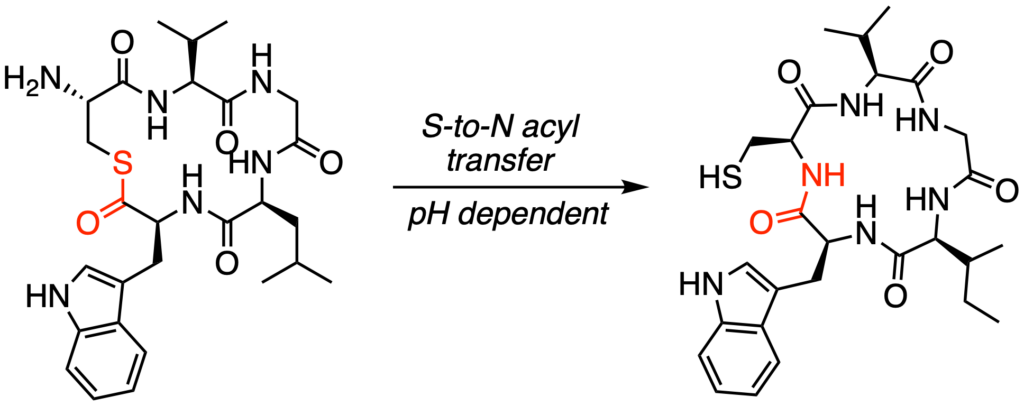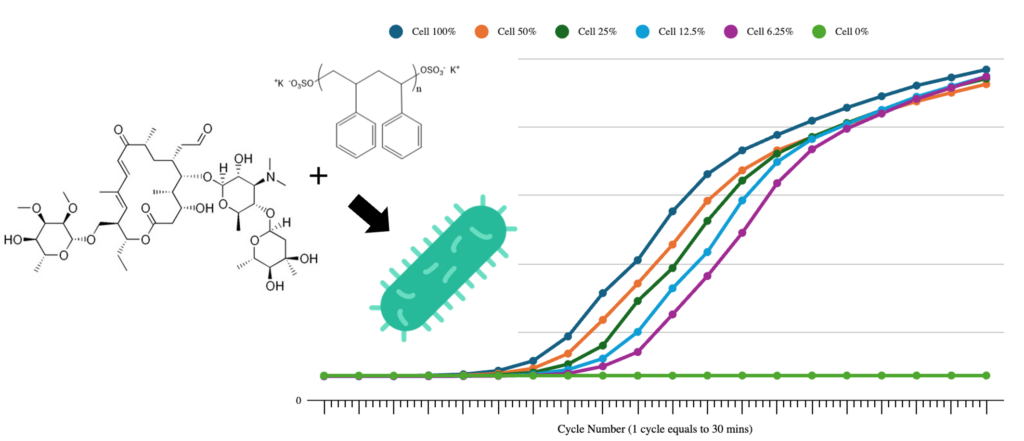Our Research
Our work centers on investigating chemical interventions and tools to study biological processes that impact human health. Our research largely focuses on synthesis of small molecules and peptides to study and modulate a mechanism of density-dependent communication in bacteria known as quorum sensing (QS). As it has been demonstrated to control virulence, competence and biofilm formation in a variety of different bacterial species, manipulating QS is recognized as a strategy for treating disease states that result from these phenotypes. Recently, we have begun studying the impact of other chemical interactions on biological systems, including the interactions of trace pollutants on environmentally important microbes.
Current Projects
Quorum Sensing in Streptococcus gordonii

The ability of the opportunistic pathogen S. gordonii to infect a host and develop resistance to antibiotics is controlled by QS. The signals that mediate this communication are short, helical peptides known as CSPs (Competence Stimulating Peptides). In collaboration with the Tal-Gan Group at the University of Nevada, Reno, we are investigating the binding domain of CSP to better understand the relationship between the peptide’s structure and its QS activity. In doing so, potent inhibitors of S. gordonii QS will be developed.
Quorum Sensing in Lactiplantibacillus plantarum

QS in commensal bacteria L. plantarum has been demonstrated to control cell adherence and bacteriocin production. By understanding the fundamental structure-activity relationships between LamD, the cyclic peptide that regulates L. plantarum QS, and its cognate receptor, LamD derivatives will be synthesized capable of modulating these phenotypes. As L. plantarum and other Lactobacillus species compose a significant percentage of the human gut microbiome, enhancing these phenotype may provide a colonization advantage for these species in the presence of microbial pathogens or diseases of ecological imbalance.
Environmental Pollutants & Cell Viability

Nanoplastics and antibiotics are part of a larger class of pollutants known as pollutants of emerging concern. Their prevalence, persistence, and ability to transform within the environment make their environmental and biological impacts particularly unknown. In collaboration with the Mensch Group at Lafayette College, we have recently begun investigating the impact of nanoplastics on a commensal, environmentally-relevant bacterial species, B. subtilis. This species is susceptible to a variety of antibiotics, including the common veterinarian-prescribed medication tylosin tartrate. We aim to characterize the impact polystyrene nanoplastics and tylosin exposure on B. subtilis, specifically assessing the change in cell viability after exposure to both pollutants simultaneously.